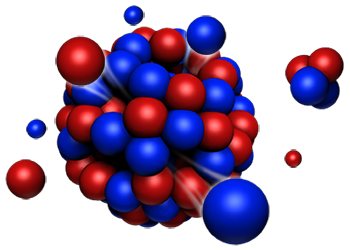Speaker
Description
In Inelastic Neutron Scattering (INS) the study of spin-waves in magnetically ordered materials has always been a cornerstone of scientific output since the Triple-axis spectrometer (TAS). Since measuring these excitations is now an everyday occurrence, increasingly exotic materials are becoming the norm.
As materials have become more exotic, the need for data analysis and modeling of these systems has become as important. For modeling spin-wave excitations one of the most popular techniques has been Linear Spin-Wave Theory, which is semi-classical in nature. The traditional workflow of having a student develop a program incorporating LSWT for a specific material is no longer sustainable.
In recent years a few groups have tackled this problem and developed programs to generalise LSWT theory an make modeling simpler and less time consuming. One such program is SpinW, which has become the de-facto standard of LSWT modelling. This is primarily due to the simple and yet powerful interface and full featureset. Indeed, models and simulations are usually less than 15 lines of code, where crystal symmetry analysis of bonding and exchange matrices has been performed and complex magnetic structures described or optimised.
Complimentary to the modeling aspect is data analysis, which is increasingly complex when large Time of Flight (TOF) datasets are obtained. One such program for reduction is Horace, which integrates closely with SpinW.
In this presentation I will aim to introduce SpinW and the key features which have made it the de-facto standard in modeling spin-waves within the LSWT framework. Then, I'll introduce the compound Yttrium Iron Garnet (YIG), a material used in telecommunication infrastructure. I will describe my work on this compound, how the low temperature spectrum was modeled and optimised to a large dataset which was taken on the MAPS spectrometer at STFC ISIS. I will comment on the lessons learnt from this experience and how it affected the future roadmap with respect to the European Spallation Neutron Source and future developments.

